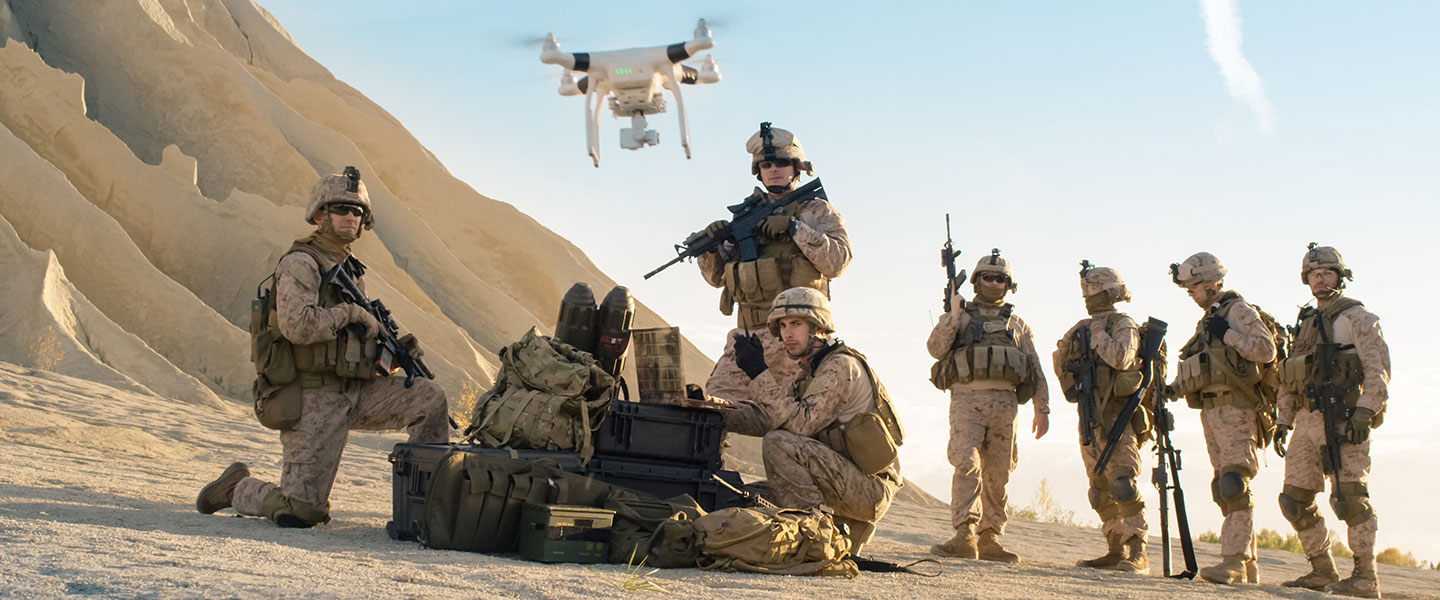
Why We Owe the Internet to the US Military
From the computers that are used to develop your app to the AI that’s incorporated into your chatbot, many of the technologies that are foundational to our digital world were either massively moved forward or funded by the military. Let’s go over some of those technologies.

MICROCHIPS
The microchips that we know today are composed of millions of transistors which were first developed by Bell Labs in 1949. Through military funding, microchips were further improved and incorporated in airplanes and missiles for complex communication and guidance systems.
Today, microchips are one of the basic building blocks of modern electronics, from calculators and cameras to hearing aids, pacemakers, and spacecraft guidance systems, they’re found almost everywhere electronics exist.

COMPUTERS
Did you know that the very first computer was funded by the US Military? The ENIAC, built between 1943 and 1945, was the first large-scale computer to run at electronic speed without being slowed by any mechanical parts. It enabled the military to calculate complex wartime ballistic tables, decryption, etc.
Apart from our phones and laptops, computers can be found in our cars, washing machines, manufacturing companies, 3D printers, power plants, banks, and more.

CELLULAR TECHNOLOGY
The original versions of cellular phone technology were heavily backed by the military for point-to-point soldier communication on the battlefield since they were more beneficial and secure than conventional radio technology.
Today, 80% of the US population owns a smartphone, and our ability to text, call, and video chat with others is a direct result of improved cellular technology.

THE INTERNET
What we know as the internet today started out as the ARPANET. Backed by the US Military, it was initially used for military and academic communication for joint development projects and as a means of communication in the event of a nuclear attack.
As of 2020, 4.66 billion people around the world are internet users. This interconnectivity gave rise to our digital world and serves as the backbone behind almost all digital transformation initiatives today.

GPS
Originally developed for the military to help them navigate terrain and develop weapon targeting systems, the first 20 satellites launched for GPS were funded and driven by the military.
Without GPS technology, we wouldn’t have Google Maps, Waze, or Uber. Depending on your business, there are many ways you can incorporate GPS technology to streamline processes and collect data.

CAMERAS
The digital sensors used by cameras were developed by the military because of their need to capture and send images wirelessly from satellites in space for terrain mapping and espionage operations.
DSLRs, mirrorless cameras, product advertisements, and face recognition technology all came as a direct result of these digital sensors.
DRONES
While there are a lot of non-military applications for drones today, the development of drones was initially funded by the US military to avoid any risk to pilots, fly undetected, and provide real-time footage of an area.
A common use for drones is to help farmers scatter seeds, deliver goods to customers, and collect photos or videos of different places, but there are plenty of other ways we can incorporate them into media, architecture, construction, and emergency response.

ARTIFICIAL INTELLIGENCE
The defense sector is projected to spend about $2 billion in Artificial Intelligence this year. The ability to play out simulations, analyze and understand satellite communications, and improve disaster preparedness are just a few of the many ways AI can be utilized by the military.
Commercially, we see AI in digital assistants like Siri, Bixby, and Google Assistant; chatbots on websites and messaging apps; disease mapping; automated financial investing; virtual booking; and social media monitoring.
So the next time you use your smartphone, Alexa, computer, or GPS, remember to say thank you to a soldier!